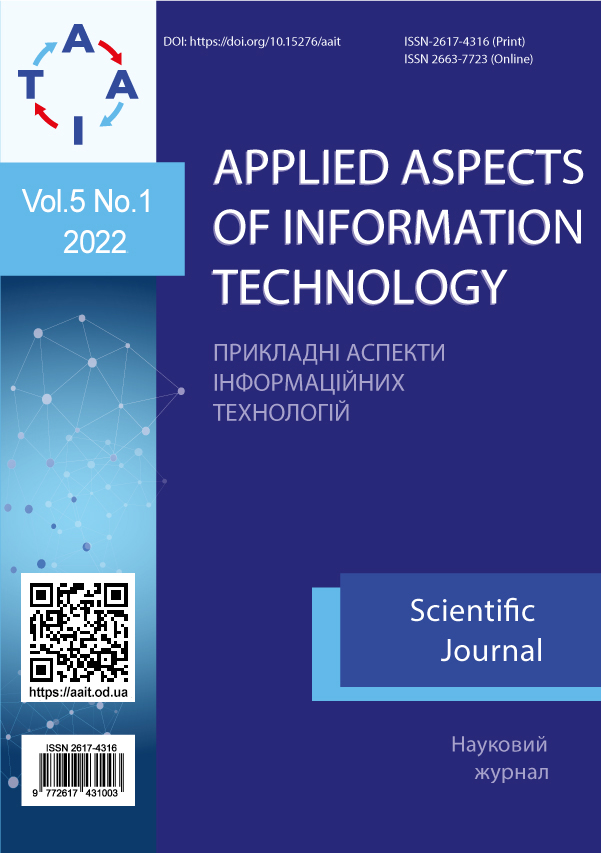Approach to modeling in the metric space of the energy exchange of two media
Main Article Content
Abstract
The work is devoted to the development and analysis of a topological model of the interaction of two energy media in a metric space. The Hausdorff metric space is chosen as the initial set, which obeys the axioms of identity, symmetry and triangle. The real element of the system in the space of energy measures, designed to transfer energy from one medium to another, is represented in correspondence with its cellular image, defined as a virtual Grassmannian. When energy is transferred from a medium with a higher energy to a medium with a lower energy, energy measures determine the organization of processes in the designed heat exchange equipment. Informative components of the Grassmannian are also its area and perimeter. An analysis of the structural model, using the modified Heron formula and the Cayley-Merger determinant, showed that, assuming equilibrium at the Grassmannian nodes, its area in the space of energy measures should be equal to zero. At equilibrium, the semi perimeter in terms of energy measures is the energy potential applied to the element under conditions of its minimum. Relationships between the area of the Grassmannian and the potential applied to the element, the temperature efficiency, and the mixing efficiency of two flows are obtained. The study of this relationship shows that the Grassmannian perimeter has an extremum at an area equal to zero, at which the perimeter is equal to the applied potential. From a design point of view, this means that when specifying flows and inlet temperatures, the requirements for the apparatus are formulated in terms of energy or final temperatures. This essentially determines the required potential and the corresponding energy exchange efficiency. In this case, the potential takes the minimum required value corresponding to the requirement of the project, and the amount of transferred energy corresponds to the required one at fixed values of flows and energy exchange efficiency.



